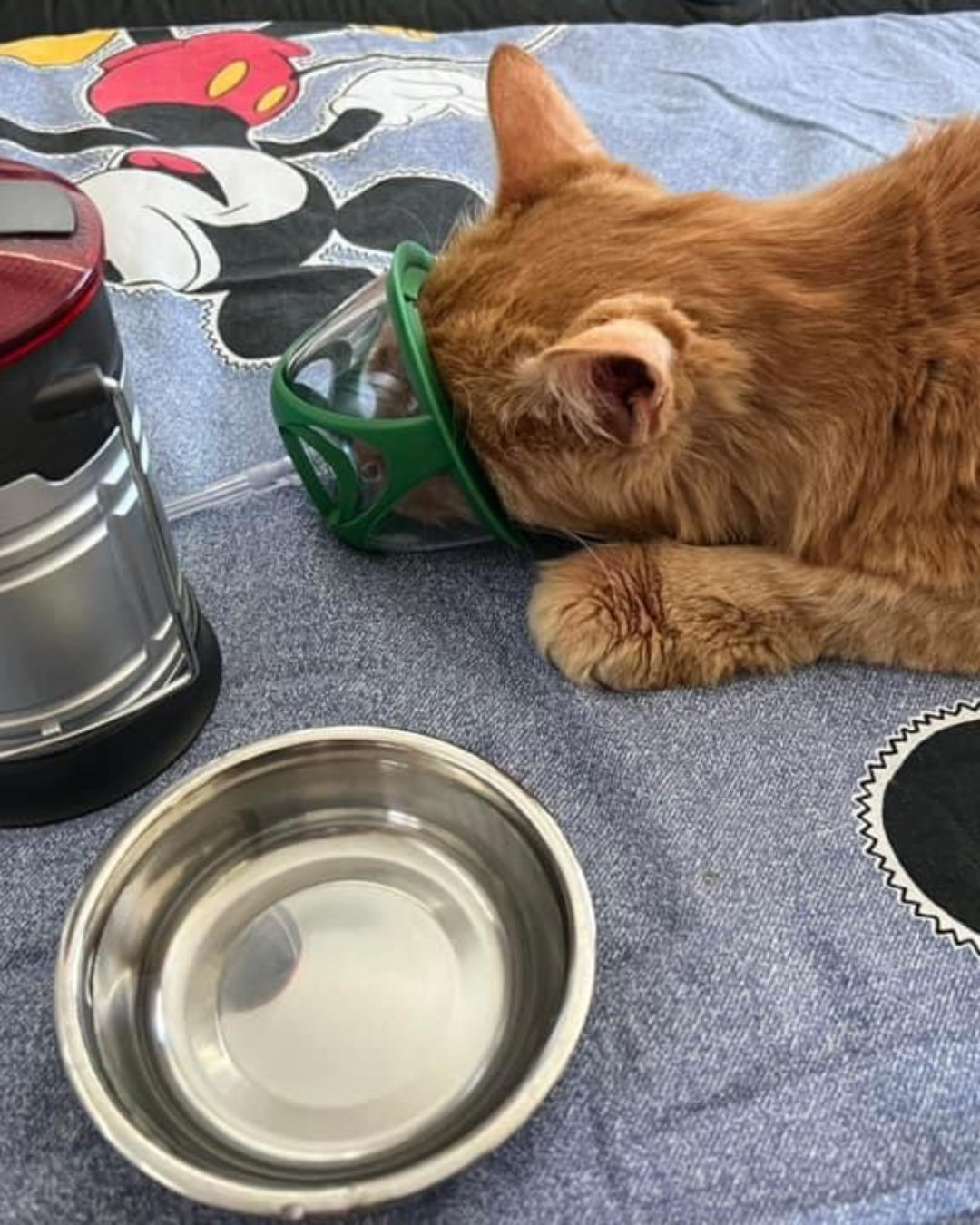As dog owners, we all want what is best for our adorable four-legged friends, especially when it comes to their health. Sometimes our precious pups can face health issues that affect their breathing or overall well-being. Let's dive into these common dog conditions and find out how pet oxygen can make a big difference in their treatment and recovery.
Pneumonia: A Common Condition in Dogs
Pneumonia in dogs is a serious respiratory condition characterized by inflammation and infection of the lungs and airways. This condition can be caused by various pathogens, including bacteria, viruses, fungi, or parasites, and can also result from inhalation of foreign substances, such as food, vomit, or toxic fumes.
Dogs with pneumonia often exhibit symptoms such as persistent coughing, difficulty breathing, nasal discharge, fever, lethargy, and a loss of appetite. In severe cases, they may struggle to breathe, and you might notice blue-tinged gums, indicating low oxygen levels in the blood. Diagnosing pneumonia involves a thorough veterinary examination, including chest X-rays, blood tests, and sometimes cultures of respiratory secretions to identify the causative agent.
Treatment typically includes antibiotics or antifungal medications, supportive care such as fluids and oxygen therapy, and measures to ensure the dog remains comfortable and well-hydrated. In some cases, hospitalization may be necessary to provide intensive care. Prompt and effective treatment is crucial to prevent complications and ensure a full recovery. Regular monitoring and follow-up visits with the veterinarian are important to track the dog's progress and adjust the treatment plan as needed. With timely intervention and proper care, most dogs with pneumonia can recover and return to their normal activities.
The good news is that pet oxygen therapy has proven to be an incredibly effective treatment that supplies the lungs with the necessary oxygen to heal. If your furry friend shows signs of respiratory distress, such as coughing, breathing difficulties, or fatigue, don't hesitate to take them to a veterinarian for immediate medical attention.
Anemia in Dogs: Boosting Oxygen Levels for Better Health
Anemia is a condition in dogs characterized by a deficiency of red blood cells or hemoglobin, which are crucial for transporting oxygen throughout the body. This condition can result from various underlying causes, including chronic diseases, nutritional deficiencies, blood loss from trauma or surgery, and autoimmune disorders where the body's immune system mistakenly attacks its own red blood cells.
Symptoms of anemia in dogs can be subtle at first but often include lethargy, weakness, pale gums, and a decreased appetite. In more severe cases, dogs may experience rapid breathing, fainting, and an overall decrease in energy levels. Diagnosing anemia typically involves blood tests to determine red blood cell count and identify the underlying cause. Treatment depends on the specific cause and may include dietary changes to address nutritional deficiencies, medications to suppress immune system attacks on red blood cells, or even blood transfusions in cases of severe anemia. Close veterinary supervision is essential to monitor the dog's response to treatment and make necessary adjustments. By understanding and addressing the root causes of anemia, pet owners can help their dogs regain their strength and vitality, ensuring they lead healthy, active lives.
If your dog seems tired and has pale gums, they may have anemia. But don't worry, there's a solution! Pet oxygen therapy can support dogs with anemia by giving their body the extra oxygen it needs to make up for the decrease in oxygen-carrying capacity. Talk to your vet about incorporating pet oxygen therapy into your dog's treatment plan for a bouncier, happier pooch.
Heart Disease: Cardiovascular Conditions and Using Pet Oxygen
Cardiovascular conditions are a significant health concern for dogs, often leading to serious complications if not managed properly. Among the most common heart-related issues is congestive heart failure (CHF), which occurs when the heart is unable to pump blood effectively, leading to fluid buildup in the lungs and other organs. This condition can be caused by various underlying problems, such as dilated cardiomyopathy (DCM), a disease of the heart muscle that affects its ability to contract and pump blood efficiently, or mitral valve disease, which involves the degeneration of the heart’s mitral valve, causing blood to leak backward into the left atrium.
Symptoms of cardiovascular conditions in dogs can include coughing, difficulty breathing, fatigue, and a decreased ability to exercise. Additionally, dogs with heart issues may experience fainting or collapse due to poor blood circulation. Early detection and treatment are crucial, often involving medications and supplemental oxygen to manage symptoms and improve heart function, along with lifestyle changes such as a balanced diet and controlled exercise. Regular veterinary check-ups and monitoring are essential to manage these conditions effectively, ensuring that dogs with cardiovascular issues can maintain a good quality of life.
If your furry friend has been diagnosed with a heart condition (such as Congestive Heart Failure), there is a good chance that they are experiencing breathing difficulties and decreased exercise tolerance. Fortunately, pet oxygen therapy can significantly improve their quality of life by providing the necessary oxygen to the bloodstream. This valuable therapy reduces breathing difficulties and helps increase exercise tolerance. However, it's crucial to consult with your veterinarian to determine whether pet oxygen therapy is a viable option for your dog's specific condition. Give your furry companion the care they deserve and explore the benefits of pet oxygen therapy today.
Heat Stroke and Pet Oxygen
Heat stroke in dogs is a life-threatening condition that occurs when a dog's body temperature rises to dangerously high levels, typically due to prolonged exposure to hot and humid conditions or intense physical activity without adequate hydration. Unlike humans, dogs cannot efficiently cool themselves through sweating and rely primarily on panting and limited sweating through their paw pads.
Symptoms of heat stroke can develop rapidly and include excessive panting, drooling, red or pale gums, rapid heart rate, vomiting, diarrhea, weakness, and collapse. In severe cases, it can lead to seizures, organ failure, and death. Immediate action is crucial to prevent irreversible damage. If you suspect your dog is suffering from heat stroke, move them to a cooler area, provide water, and use cool (not cold) water to gradually lower their body temperature. Avoid using ice, as this can cause blood vessels to constrict and hinder the cooling process. Seek veterinary care immediately, as professional treatment may include intravenous fluids, oxygen therapy, and other supportive measures to stabilize your dog's condition.
Preventing heat stroke involves never leaving dogs in hot cars, ensuring they have access to shade and fresh water during outdoor activities, and avoiding strenuous exercise during the hottest parts of the day. By recognizing the signs of heat stroke and taking preventive measures, you can protect your dog from this dangerous condition and ensure their safety and well-being during warm weather.
Don't let the summer sun put your furry friend at risk of heat stroke. This dangerous condition can lead to respiratory problems and organ failure. But fear not - pet oxygen therapy can help cool and stabilize dogs in crisis. The key, however, is prevention and early detection of heat stroke. Take action to protect your dog from extreme heat by providing shade, fresh water, and never leaving them alone in hot environments. Keep your pup cool and out of harm's way this summer.
Help your dog breathe easier with pet oxygen therapy. Whether they're facing respiratory conditions, anemia, heart disease, or the risks of heat stroke, this crucial oxygen support can aid in their recovery. As responsible dog owners, it is important to stay vigilant especially during the summer months where there is extreme heat and prioritize your pet's health. It is important to be able to recognize the signs, seek prompt veterinary care and oxygen therapy when necessary, and consider the benefits of pet oxygen canisters to have on hand for emergencies. Work closely with your veterinarian to provide the best possible care for your furry friend. Together, let's help our dogs lead healthier lives and breathe easier with pet oxygen therapy.


















